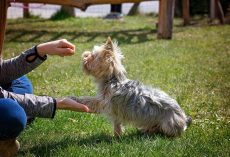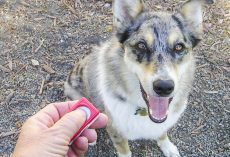If your dog doesn’t already have a daily routine, now’s the perfect time to build one. Dogs love structure — and a predictable schedule doesn’t just make them feel secure, it also makes dog training a whole lot easier for you.
It may take a little extra effort at first, but just like us, dogs thrive on clarity and consistency. There’s no quick fix or magic shortcut in dog training — success comes from strategy, patience and, yes, a solid routine.
Here’s why a schedule matters and how to create one that fits your lifestyle.
Do Dogs Actually Like Routine?
Absolutely. Dogs feel more relaxed when they know what to expect each day. This is especially true for adopted dogs, who may not have had reliable structure in their previous homes.
Your habits become their habits — and your routine shapes your dog’s behavior. If you want progress that sticks, you’ll need to practice consistency every day. A good schedule turns intentional training into long-term results.
Benefits of a daily dog routine:
- Reduces anxiety by creating predictable patterns
- Helps with house training
- Makes training smoother and more effective
What Should Your Dog’s Schedule Include?
There’s no one-size-fits-all routine because every dog and household is different. Your schedule should fit naturally into your day while meeting your dog’s physical, emotional and training needs.
Most routines include:
- Mealtimes
- Walks (including at least one structured walk)
- Potty breaks
- Training sessions
- Playtime and enrichment
- Rest or crate time
- Bedtime
Just be careful not to make the routine too rigid. Your dog doesn’t need breakfast at exactly 7:00 a.m. every day — she just needs a consistent window so she knows what to expect without becoming anxious when life shifts a bit.
A great daily routine mixes predictability with gentle variety — like a morning walk that happens at the same time but follows different routes every few days.
Sample Daily Dog Schedule
Here’s a balanced example to help you build your own:
7:00–7:45 a.m.: Wake up + morning walk/potty
8:00–8:30 a.m.: Breakfast + a short training session
9:00–9:30 a.m.: Potty break
10:00–12:00 p.m.: Nap time (or crate time for puppies)
12:00–12:30 p.m.: Afternoon potty break + quick walk
1:00–4:00 p.m.: Nap/crate time
4:00–5:00 p.m.: Training, bonding and play
5:00–5:45 p.m.: Potty break
6:30–7:00 p.m.: Dinner
7:30–7:45 p.m.: Potty break
Evening: Relax and hang out
Before bed: Final potty break
Tips for Building an Effective Schedule
Include one structured walk per day
A structured walk is all about calm, polite walking on a loose leash — no pulling, zigzagging or dragging you into bushes. It’s one of the best ways to practice focus, build confidence and reinforce training. Bring plenty of treats to reward good behavior.
Like Train-Me! Training Reward Treats from Amazon
Add at least one hand-feeding session
Hand-feeding simply means using your dog’s regular kibble as training rewards. It’s:
- Great for bonding
- Excellent for mental enrichment
- Perfect for keeping calories in check
Go at your dog’s pace
All dogs learn at different speeds. Some will adapt quickly to a new routine; others may need more time and consistency. Don’t compare your dog to anyone else’s — her learning timeline is uniquely hers.
Be patient, stay consistent and celebrate the small wins.
We independently pick all the products we recommend because we love them and think you will too. If you buy a product from a link on our site, we may earn a commission.











